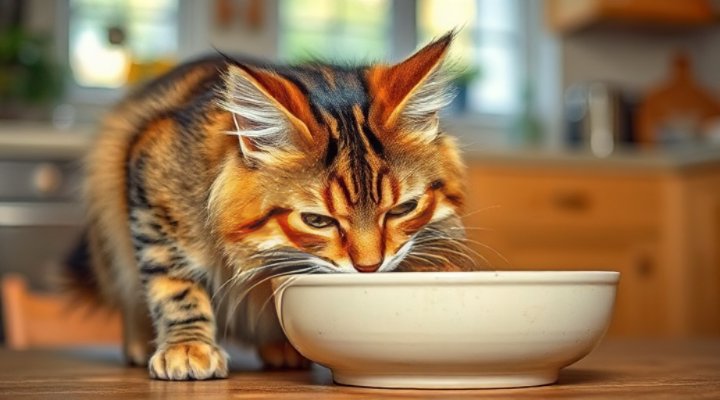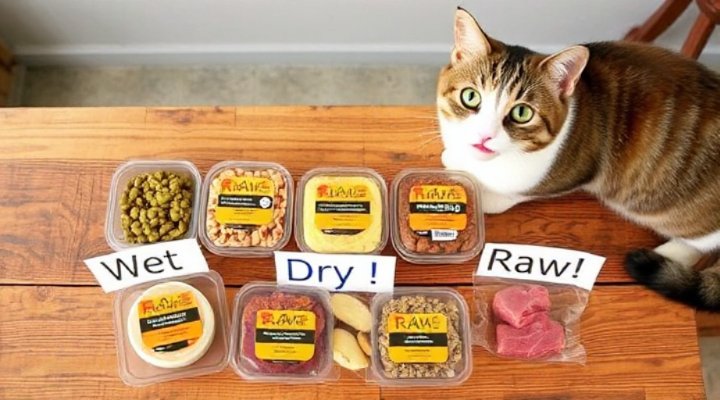Choosing the best cat food is one of the most important decisions you’ll make for your feline friend. After all, a well-balanced diet is the foundation of your cat’s health, energy, and longevity. But with so many options available, how do you know which one is right for your pet? Let’s break it down step by step.

Understanding Your Cat’s Nutritional Needs
Cats are obligate carnivores, which means they require a diet high in animal protein. Unlike dogs, who can thrive on a more varied diet, cats need specific nutrients like taurine, arachidonic acid, and vitamin A that are found primarily in meat. Therefore, the best cat food should always list a high-quality animal protein as its first ingredient.
For example, look for foods that contain chicken, turkey, fish, or beef as the primary ingredient. Avoid products that list vague terms like ‘meat by-products’ or excessive fillers like corn and wheat. These can be harder for your cat to digest and may not provide the necessary nutrients.

Wet vs. Dry Cat Food: Which is Better?
One of the most common debates among cat owners is whether wet or dry food is the best cat food option. In truth, both have their pros and cons.
Wet food is excellent for hydration, as cats often don’t drink enough water on their own. It’s also typically higher in protein and lower in carbohydrates. On the other hand, dry food is convenient, has a longer shelf life, and can be better for dental health if you choose the right formula.
For the best results, many veterinarians recommend a combination of both. You can learn more about balancing your cat’s diet in our guide on Fancy Feast Cat Food.

How to Read Cat Food Labels Like a Pro
Understanding cat food labels is crucial to choosing the best cat food for your pet. Here are some key things to look for:
- AAFCO Statement: This ensures the food meets minimum nutritional requirements.
- Named Protein Sources: Look for specific meats like ‘chicken’ rather than generic ‘poultry’.
- Guaranteed Analysis: Shows minimum percentages of protein and fat, and maximum percentages of fiber and moisture.
For more detailed information on pet food regulations, visit the FDA’s pet food labeling guide.

Special Dietary Needs
Some cats may require special diets due to health conditions like diabetes, kidney disease, or food allergies. In these cases, it’s essential to consult with your veterinarian to find the best cat food for your pet’s specific needs.
For instance, senior cats often benefit from foods with joint support supplements, while kittens need higher calorie and protein content for growth. If you’re considering homemade options, check out our article on Homemade Pet Food Recipes for inspiration (while noting that cats have different nutritional requirements than dogs).
Top Ingredients to Look For (And Avoid)
When searching for the best cat food, keep an eye out for these beneficial ingredients:
- High-quality animal proteins (chicken, turkey, fish)
- Healthy fats (omega-3 and omega-6 fatty acids)
- Digestible carbohydrates (in moderation)
- Essential vitamins and minerals
On the flip side, try to avoid:
- Artificial preservatives (BHA, BHT, ethoxyquin)
- Artificial colors and flavors
- Excessive carbohydrates and fillers
- Generic ‘meat’ sources
For more information on pet nutrition, the American Animal Hospital Association offers excellent resources.
Transitioning to a New Food
When switching to a new best cat food, it’s important to do so gradually over 7-10 days to avoid digestive upset. Start by mixing a small amount of the new food with the old, gradually increasing the proportion of new food while decreasing the old.
Remember, every cat is unique. What works for one might not work for another, so patience and observation are key. Monitor your cat’s energy levels, coat condition, and litter box habits to ensure the new food agrees with them.
Related Keywords
healthy cat food, cat nutrition, wet cat food, dry cat food, raw cat food, cat food brands, best kitten food, senior cat food, grain-free cat food, hypoallergenic cat food
